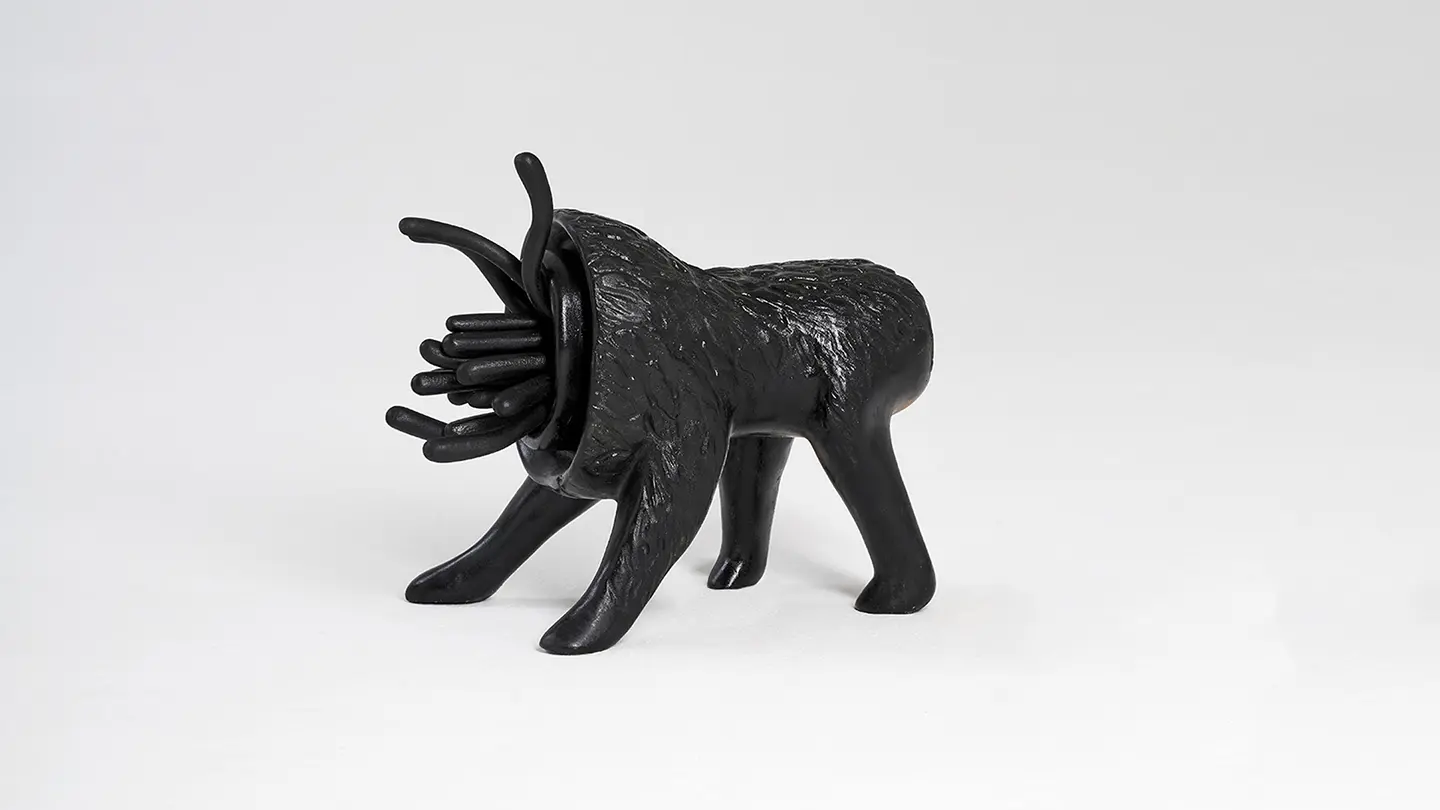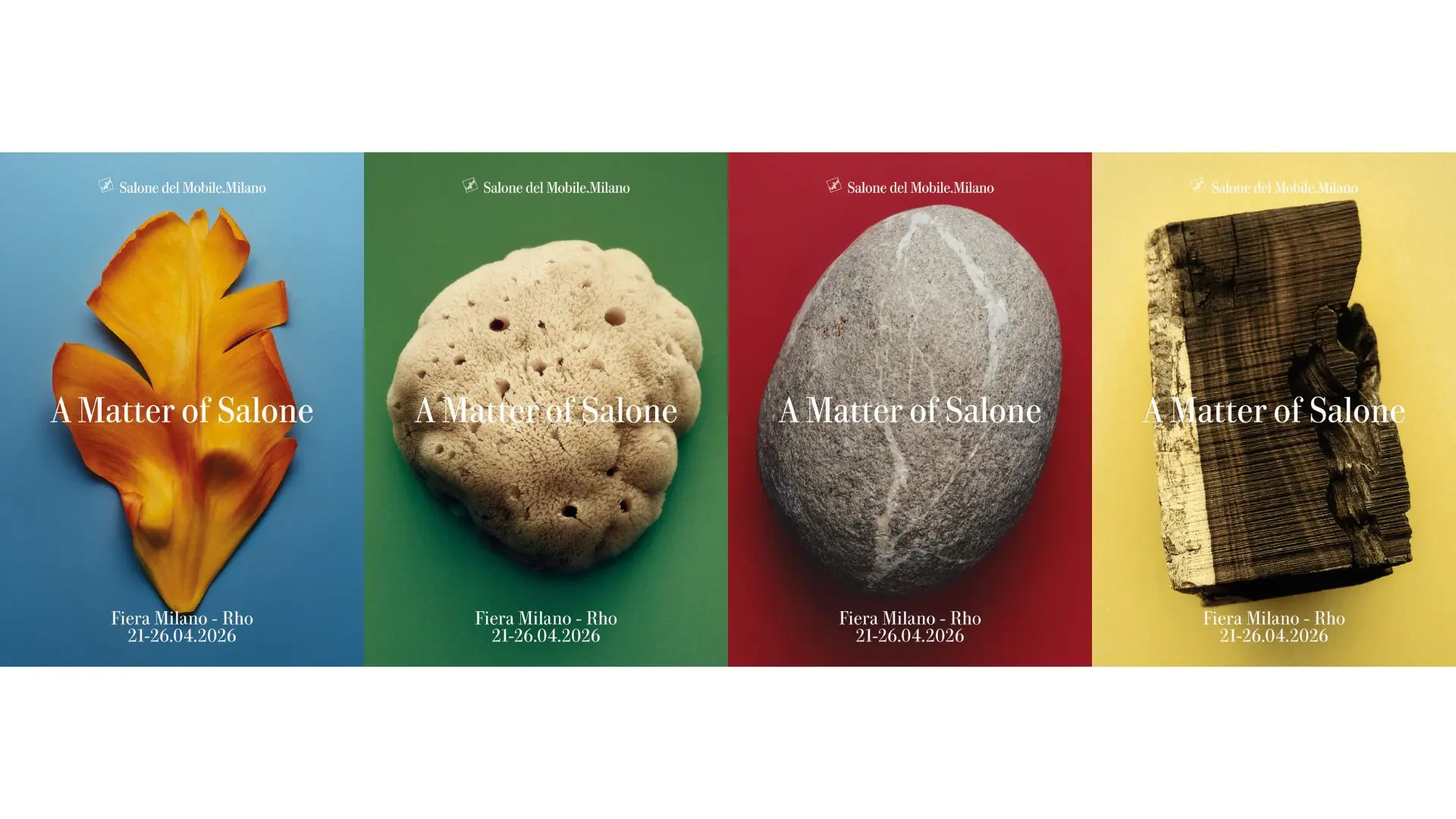From a reflection on humans to matter as meaning: the new Salone communication campaign explores the physical and symbolic origins of design, a visual narration made up of different perspectives, united by a common idea of transformation and genesis
Atang Tshikare and the art of storytelling through design

Atang Tshikare, ph. Kope Figgins
South African creative Atang Tshikare discusses how he realises cultural stories and myths through his work, and why functionality comes second to creativity
Stories are at the heart of multidisciplinary artist Atang Tshikare’s work, and understandably so – they’re stories that have long been told, exchanged and passed down by people across his home of South Africa, including his own Tswana ancestors. Taking these stories for inspiration, Cape Town-based Tshikare has created a portfolio of fantastical, biomorphic pieces that are part artwork, part furnishing. These typology-bending pieces have stirred up excitement and interest the world over, with Tshikare having participated in exhibitions such as PAD London, Design Days Dubai and of course the Investec Cape Town Art Fair. Tshikare – who founded his own studio Zabalazaa Designs in 2010 – has also collaborated with a wide range of brands including Adidas Originals, Belvedere Vodka, MTV Base and BMW. I sat down with the artist to learn more about his creative process, upcoming pieces, and why he thinks his oeuvre of work is much like a story in that it's connected by “one big narrative”.

Mollo Oa Leifo chairs, Atang Tshikare, ph. Anke Loots
There's quite a few, but I'll tell you about the closest ones – in February there's an art fair happening here in Cape Town and I'm taking part, I'm working on a couple of pieces for it. In April, I'm part of a group show in Soho, New York and I've got two pieces that I'm presenting. One of them is outside and really massive, it's about 1.8 metres high… it also weighs a lot; it needs eight to 10 people to carry it. The second piece that I'm working on is made with bronze, but it's not finished yet.
I try to stick with a material from the beginning. When I have an idea, I know it’ll predominantly work in either wood, bronze, or stone – I don't diverge from that too much because I've learned about weights, textures, and what different materials can handle.
I generally work in one or two ways. I’ll have an idea that is so definitive that I'll go straight to making a clay maquette, which I'll work on until I get the final shape. If the idea is really out there or a bit elusive, I’ll draw it first so I can see its potential. I have so many ideas that I've put down on paper, and I always use a notebook. My notebook is almost like a dictionary of my work.
There are always ideas that come back to me; it's almost like learning a language. You're not necessarily creating new things, you're just thinking this "word" and that "word" can form this other "word" – but in a physical sense of creativity.

Nkwe Molelong, Atang Tshikare, ph. Anke Loots
I've started collaborating with people [in South Africa] who work with materials which are customary to them – even when I’m working with materials that I know, I'll link up with someone that is well versed in the local material of the area where they live and I'll connect it with what I have. When I work with Xhosa women, for example, they’ll use beadwork a lot, when I work with women from Lesotho, they’ll use grass.
Hopefully this year I'll get to go to Ghana and Mozambique, because they use different weaving and clay techniques – that's one of the ways that I'm looking to expand.
Actually, no. When I was working with a design gallery a few years ago, they tried to push me in that direction but I stayed true to what I was doing. I've always been an artist; before I did sculpture, I was already drawing, painting and all those things. So when I came into sculpture, it was always about the artwork and what the artwork says. The functionality came afterwards. I'm creating work that talks about something which is related to me spiritually, physically, culturally or traditionally. Therefore my work becomes part of a language that says who I am and where I'm from; the functionality is more of a "by the way". I have so many ideas that can usually work within a single object so I don't try to limit myself – that's how I keep on pushing in terms of what’s next.

Sebatana, Atang Tshikare, ph. Anke Loots
I'm a creative. I don't talk about this a lot but I also play music; you could give me almost any instrument and within a certain amount of time I'd be able to master it. I've played piano, clarinet and I collect records... My father plays the saxophone and harmonica. So music is very much part of what I do. Besides that, I think like a storywriter. Last year, for example, I held a show for my son because he turned one year old and I wanted to celebrate his life – so I wrote a story. My wife, who's doing a PHD in linguistics at UCT, helped me edit it. If you look at all the artworks that I've done since 2015, they're actually part of one big narrative.
I'm quite good at directing too because I've worked in high-end fashion here in South Africa. I was also a radio DJ during university, and while I was there I used to host events with my wife and some friends – we'd bring together local skaters, basketball players, poets, MCs and breakdancers. We did this once every four months, for six years. It's not about trying to put myself in any sort of box, because as soon as I do that, it's like saying "this is the only direction I can go".

Ke-Bone, Atang Tshikare, ph. Anke Loots
I see my work on multiple levels simultaneously, and on a bigger scale. When I was on my own I'd only have one show on my mind. Whereas with my son, I'm creating a trilogy of books, toys... I think of how drawings can become animations, music videos or movies. Or I think of how some of my sketches could become clothing designs. Now I think in multiple layers, because I see something that needs to live beyond me. I'm basically thinking generations ahead.
Yes and no – not the urban side, but more so the nature. On one side of Cape town you've got the sea, on the other side you have the mountains. When you go outside of the city, you get to see a lot of that. I live 30 seconds away from the ocean, so I go there pretty much every morning and get into the water or run on the promenade. I really enjoy it, it’s therapeutic for me. The parts of Cape Town that make you feel free, like you're not in a city, are what I love. Culture, for me, is back where I come from, where my relatives are and where people speak the same language as me. Here, I listen to stories and adopt them. The people that I work with are all from different places in Africa: Lesotho, Zimbabwe, Zambia etc. So they all have different stories; we talk about traditions, the foods they eat, the things they make and so on… It feeds a lot into my work.

Salone 2025 Report: The Numbers of a Global Event
Data, analyses, and economic, urban, and cultural impacts. The second edition of Salone del Mobile’s “Milan Design (Eco) System” Annual Report takes stock of a unique event and consolidates the fair’s role as the driving force behind Milan as the international capital of design


12 books to place under the tree or give as a gift. Conveying discoveries, insights and visions
A journey through women’s interior design, three iconic monographs and the links between design, photography and marketing, up to the transformation of Jeddah, social innovation and a reportage by Branzi and... 50 designers on the sofa



 Stories
Stories









